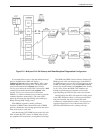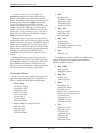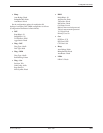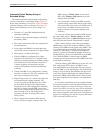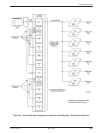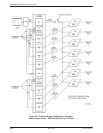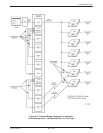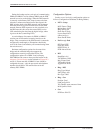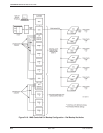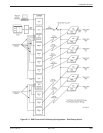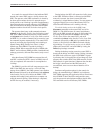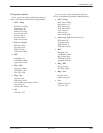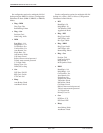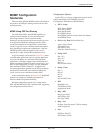
Configuration Scenarios
D-193610-A2-GB41-60 March 1999
Set the extended bridge configuration options as
follows (Configuration Worksheet for Bridge Mode):
• MUX – Setup
MUX Funct: EBrdg
Bridge Rate: 9.6
Brdg Timing: Prt1
Share DevA: Enab
Lowest Port#: 2
# Ports in Gp: 3
Port Cntrl: Host
Share DevB: Disab
• Prt2 through Prt4 (Prt5 and Prt6 N/A)
RTS Cntrl: DTE
Elast Stor: Enab
RTS/CTS Del: 0
DTR Alarm: Disab
• DSU
Rate(Kbps): 9.6
TxClkSource: DDS
Msg Clamp: Enab
TxElastStor: Disab
AggrSwitch: Disab
• Diag – DSU
Diag Type: Disr
Disr Type: 3600e
• Diag – Gen
Position: Cntrl
LinkConfig: M-Pt
• Gen
DTE Port: EIA232
Network Management-Controlled
Full Backup Using an Extended Bridge
The assumed configuration for backup (Figure D-10
shows when dial backup is not active, while Figure D-11
shows when dial backup is active) that is controlled by an
NMS, using an extended bridge, is as follows:
• Network is a 7-drop DDS multipoint network
operating at 56 kbps.
• Full backup of all tributaries (with the digital bridge
operating at 14.4 kbps) is required with outage of
any tributary.
• The control and tributary DSUs are configured for
nondisruptive diagnostics with a 400 bps in-band
secondary channel transport speed.
• Seven central-site DBM-Vs are dedicated to the
control DSU and are connected to its digital bridge.
• Tributary DBMs are configured for 14.4 kbps
operation, LSD emulation (V.13 switched-carrier
operation), no fallback, and auto-answer with
password security.
• Central-site DBM-Vs are configured for 14.4 kbps
operation, no fallback, and outgoing call setup with
password security.
• Digital bridge consists of a central-site bridge and
an extended bridge working in tandem; the
central-site bridge has Bridge Rate set to 14.4 kbps,
has Ports 2 through 6 active and configured for
contention, and takes its timing from the DDS
system clock; the extended bridge has Bridge Rate
set to 14.4 kbps, has Ports 2 through 4 active and
configured for contention, and takes its timing from
the external timing on Prt1.
• The FEP can accept a change in speed from 56 kbps
to 14.4 kbps.
• When a failure occurs in the backbone DDS
network, all of the drops are affected. The control
DSU reports a Facility Alarm and a Tributary
Time-out alarm for each tributary DSU and DBM.
• You have either a System Controller, or a
COMSPHERE 6700 or 6800 Series NMS
workstation.



